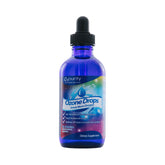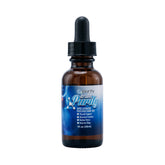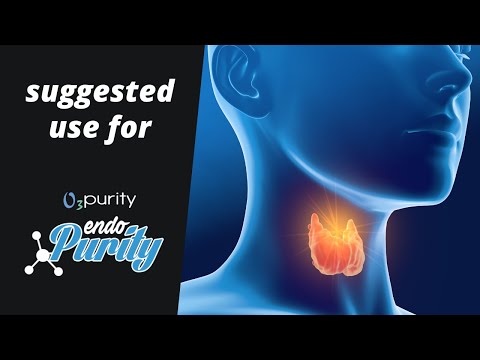OZONE APPLICATIONS – Brad Hunter, P.Eng.
Ozone is triatomic oxygen. As a gas it is blue; both liquid ozone (-112 C) and solid ozone (-193 C) are a deep blue color. It is this blue ozone in the atmosphere that causes the sky to be blue. At altitudes from 25-30 km. ozone is created by a portion of the sun’s ultraviolet spectrum. It exists as a gas in concentrations of 10-20 parts per million (ppm).
In these concentrations, ozone is a powerful absorber of a narrow portion of the
sun’s ultraviolet radiation. At ground level, ozone exists in a greatly diluted state and is always present in minute quatities (.001-.003 ppm) which we breathe in. It does not become an irritant until levels above .1 ppm are exceeded for over eight hours. Below those levels there have never been any permanent detrimental effects from inhaling it.
Ozone is created naturally by crashing surf, whitewater rapids, and lightning storms. Recently, ozone has come to public attention as an alleged pollutant in smog.
In order to measure hydrocarbon air pollution, an index is required. High levels of hydrocarbons have a corresponding ozone level (since the ozone is attracted to the
pollutants), so by measuring the ozone, scientists can measure indirectly how bad the pollution is. What is not mentioned is that the ozone molecule lasts for a maximum of 20 minutes as it busily eats up the hydrocarbon pollution by oxidizing it. Carbon monoxide, benzene, chlorides, sulphur and many other pollutants are swiftly oxidized on contact by ozone, thus cleaning the air. Ozone has long been internationally recognized as the most powerful oxidant next to hydroxyl, which is a mixture of ozone with hydrogen peroxide. Ozone is used in over 30 different industries as an industrial oxidizer and sterilant.
Existing applications include: synthetic fibers, chemicals, jet lubricants, air scrubbing for clean rooms, treatment of industrial wastes, potable water treatment, bottling plants, sewage treatment, aquaculture, aquarium sanitation, food preservation, sterilization of containers, deodorization, pulpwood bleaching, metal extraction, etc. Ozone’s most well known use is in water treatment as a primary stage disinfectant because of its bacteriacidal and virucidal efficacy. Both the EPA and the FDA acknowledge ozone’s ability to oxidize 99.9992% of all waterborne pathogens. Ozone has been used for human health since 1860, and is presently employed in over 16 countries. Its widest use is in Germany , where over 7000 doctors have treated more than 12,000,000 people since WW II. In the United States , the FDA has not allowed testing of ozone, and has actively persecuted physicians who use it. Nevertheless, more and more doctors are turning to ozone therapy as a crucial tool for the treatment of serious diseases. In five states, Alaska , Washington , Colorado , North Carolina and New York , physicians are now able to
employ any therapeutic technique including ozone without fear of persecution.
In Dr. H.E. Sartori’s recent book, the multiple uses of ozone for human health, dentistry, animal health and industrial uses are well covered.
There are three technologies utilized for the generation of ozone:
Ultraviolet light, Corona discharge, and Cold plasma.
1. Ultraviolet light in the 180-190 nanometer wavelength generates ozone from ambient without producing nitrous oxide compounds. But, UV cannot generate the concentrations necessary for health or industrial applications, even with oxygen feed. Typically, UV systems produce only 1-3 ug/ml, sufficient only for air purification and cleaning of water in small quantities.
2. Corona discharge generates high concentrations of ozone, up to 140 ug/ml, required for industrial applications. If it is properly engineered and used in conjunction with an air dryer, it may be used with ambient air. It is the most cost effective way to produce large quantities of ozone, but reliability is always a problem. An improved variation is called dualdielectric, used for medical purposes, but long term reliabiltiy is again problematic.
3. Cold plasma is a technique invented by Nikola Tesla whereby noble gases are enclosed in a glass vacuum tube and high voltage is applied. This is where the future lies for medical applications, because a clean flow of 50 ug/ml is obtainable from this technology with very long term reliability. The original Testaire medical machines of 1920s still operate perfectly today.
Different uses of ozone require different concentrations to obtain desired results. UV generated ozone is adequate for small pools, but larger pools, water parks and municipal water treatment require corona discharge to generate large quantities of ozone. It is
important to deal with people who are familiar with the specific applications of ozone in order that systems are designed to address the problem of each individual installation. Water engineers use a value called CT (concentration x time) to measure the amount of work done by an oxidant. It is important to consider the time factor when using ozone, especially when there is a large amount of undesirable material to oxidized. Insufficient time of contact or too low a concentration will produce incomplete results.







